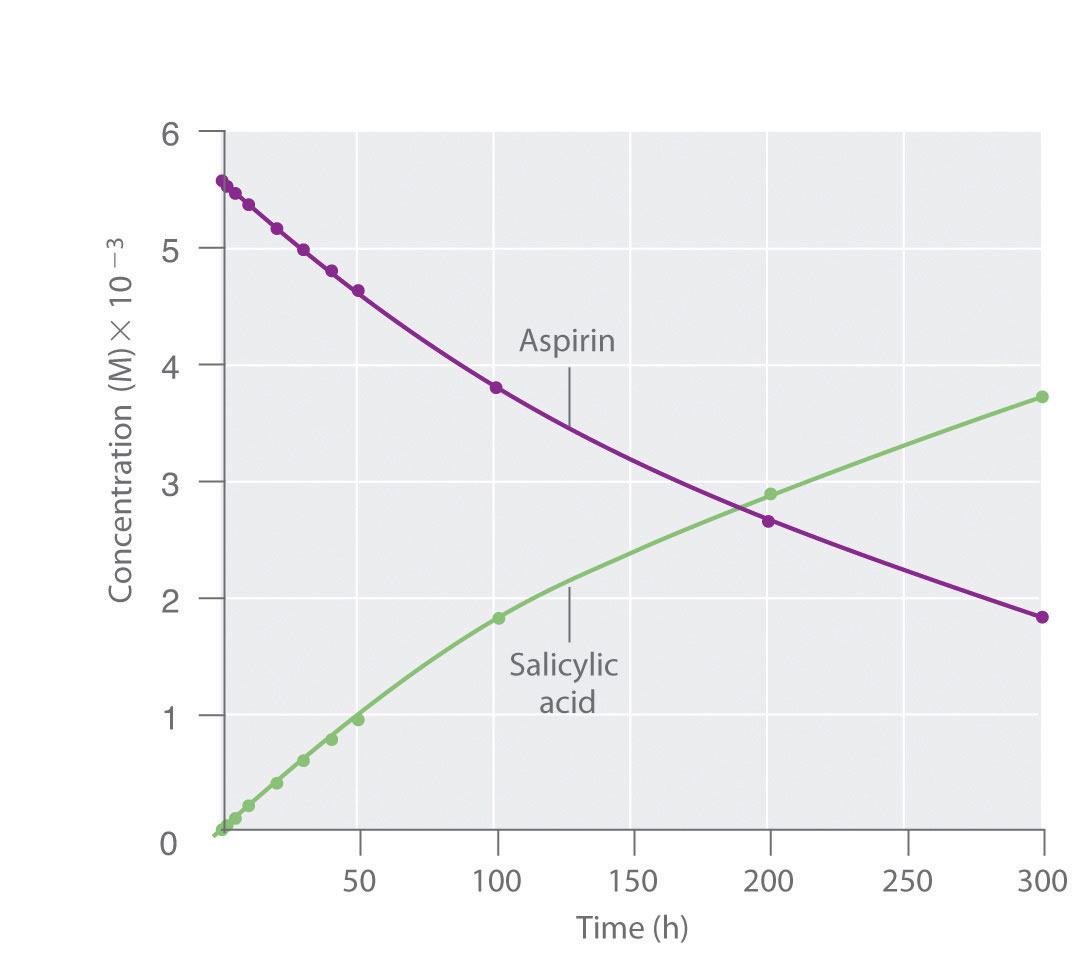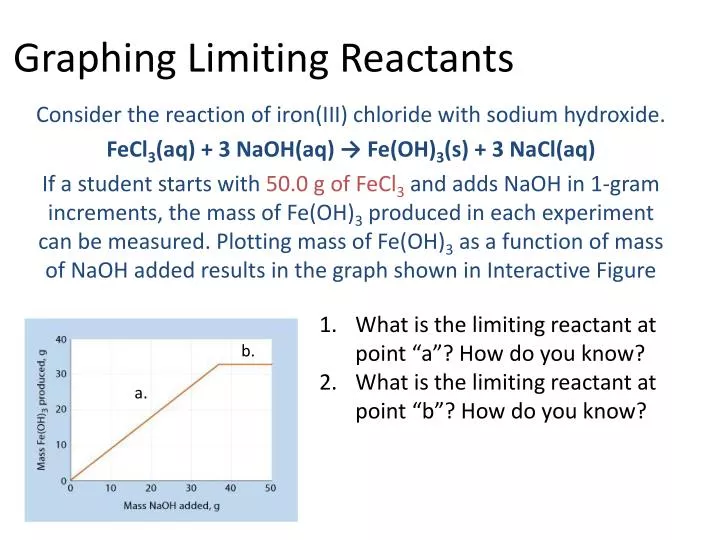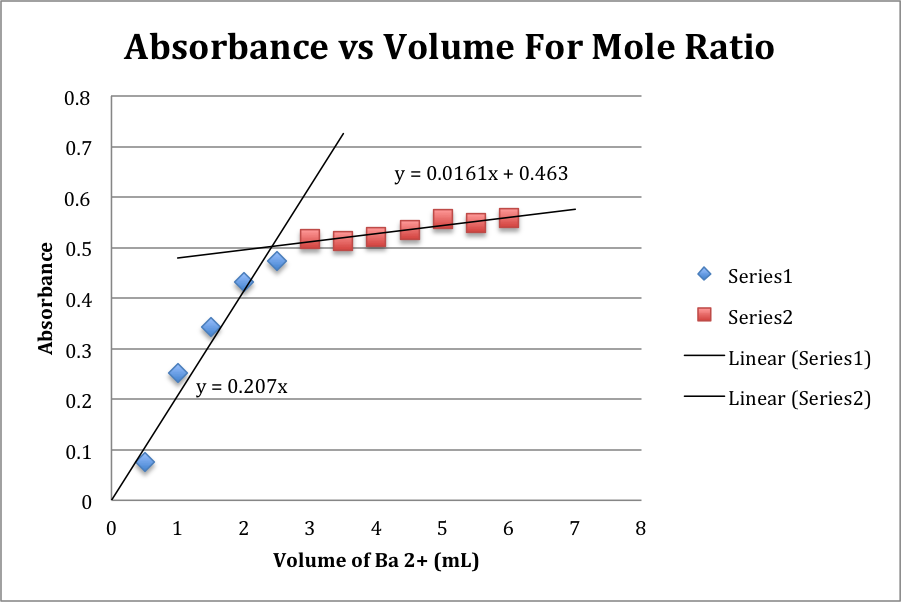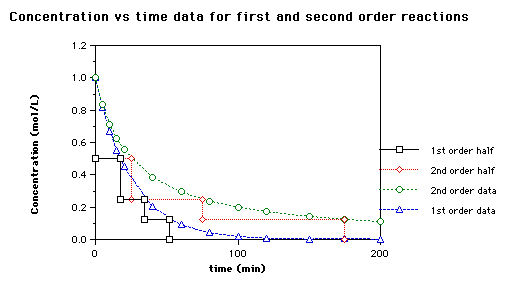How To Determine Limiting Reactant From A Graph
There are two ways to determine the limiting reactant. The limiting reactant or reagent can be determined.

Limiting Reagent Understanding Stoichiometry Through Graphing Youtube
Note that the activation energy between reactant and the intermediate step 1 G1 is greater than the activation energy between the intermediate and the products step 2 G2.

How to determine limiting reactant from a graph. Find the limiting reagent by looking at the number of moles of each reactant. Rock Chalk Jayhawk KU. Thus it can be said that step 1 is the rate-limiting step of the reaction which is the highest energy barrier that must be overcome.
Once you find the moles only convert one of them to the moles of the other reactant. Calculate the number of moles of product that can be obtained from the limiting reactant. Convert all amounts of reactants and products into moles 4.
In most limiting reactant stoichiometry problems the real goal is to determine how much product could be formed from a particular reactant mixture. Another way to find the limiting reactant would be by applying the following steps. It shows you how to perform stoichiometric calculations an.
This chemistry video tutorial provides a basic introduction of limiting reactants. All given information must be converted into moles most likely through the use of molar mass as a conversion factor. Find the moles of each reactant present.
One method is to find and compare the mole ratio of the reactants used in the reaction Approach 1. The other method is to calculate the gram masses of the product resulting from each reactant. The first is to compare the actual mole ratio of the reactants to the mole ratio of the balanced chemical equation.
It explains how to identify the limiting reactant given the mass in grams. The reactant that produces the least amount of product is the limiting reactant. Write a balanced equation for the reaction 2.
Determine the balanced chemical equation for the chemical reaction. Compare the mole ratio of the reactants with the ratio in the balanced chemical equation to determine which reactant is limiting. Convert the number of moles of product to mass of product.
Determine the balanced chemical equation for the chemical reaction under study. Calculate the molecular weight of each reactant and product 3. This reactantis the Limiting Reagent.
There are two methods used to find the limiting reactant. Showing how to find the limiting reagent of a reaction. The determination of the limiting reactant is typically just a piece of a larger puzzle.
This chemistry video tutorial shows you how to identify the limiting reagent and excess reactant. Causey shows you how to find the limiting reactant reagent and the maximum product from a chemical equation using stoichiometry. Convert all given information into moles most likely through the use of molar mass as a conversion factor.
So X will be the limiting reagent. A value less than the ratio means the top reactant is the limiting reactant. Calculate the grams of product produced by the Limiting Reagent.
Need help with chemistry. Calculate the moles of a product formed from each mole of reactant. Cancel units and calculate.
Identify the reactant giving the smaller number of moles of product. The limiting reagent or reactant in a reaction is found by calculating the amount of product produced by each reactant. This is thetheoretical yield.
Figure out the limiting reagent. The reactant that yields the smallest mass of product is the limiting reactant. The way I calculate the limiting reactant is by first finding the amount of moles are in the reactants given.
The key is to keep the same reactant on top as the step above. 279 Since our value is less than the ideal ratio the top reactant is the limiting reactant. A video made by a student for a student.
The provided information identifies copper sulfate as the limiting reactant and so the theoretical yield g Cu is found by performing mass-mass calculation based on the initial amount of CuSO 4.

New Gcse Separate Sciences Ocr Gateway Sb Page 118

Chapter 14 2 Reaction Rates And Rate Laws Chemistry Libretexts

Determining Limiting Nutrients From A Graph Biology Stack Exchange

Stoked About Stoich Sodium Bicarbonate And Citric Acid Pasco Blog Pasco

Please Help Answer Number 2 I Need To Find The Chegg Com

Practice Exercise P 101 Limiting Reactant Calculations With Moles Youtube
Finding The Ratio Of Moles Of Reactants In A Chemical Reaction Morgan Shapiro Ap Chemistry 2012 2013
Http Laney Edu Pinar Alscher Wp Content Uploads Sites 219 2019 04 1 Lr Graphing Dry Lab Pdf

Graphic Organizers Physics And Chemistry Methodology Contents
Mole Ratio Lab Ap Chemistry Zack

New Gcse Separate Sciences Ocr Gateway Sb Page 118
Https Connchem Org Wp Content Uploads 2019 09 Reactions Lesson 5 Limiting Reactants Pdf

Limiting Reactants Lab Dataclassroom
Limiting Reagents And Gases Chemical Education Xchange
Experiment Two Alexia S Ap Chemistry Lab Writeups

Ppt Graphing Limiting Reactants Powerpoint Presentation Free Download Id 3869586


Post a Comment for "How To Determine Limiting Reactant From A Graph"